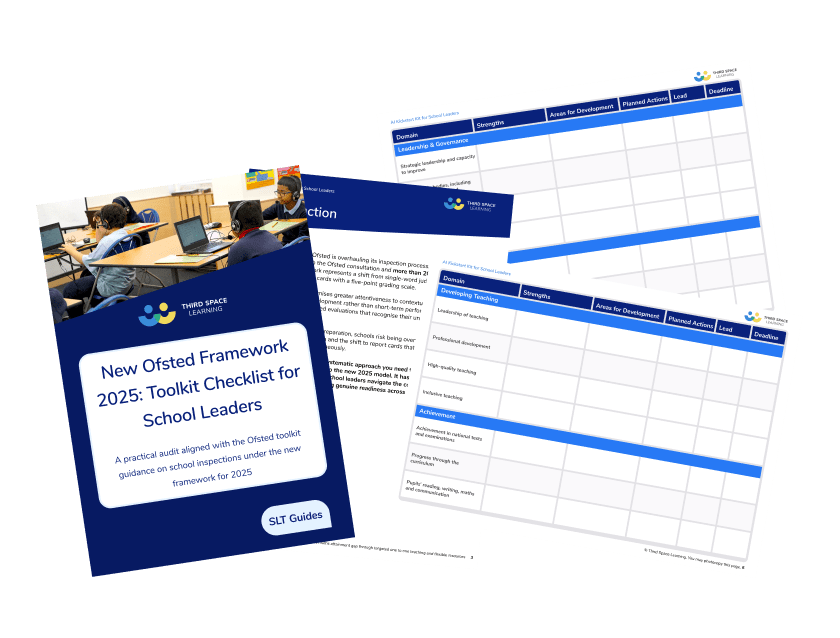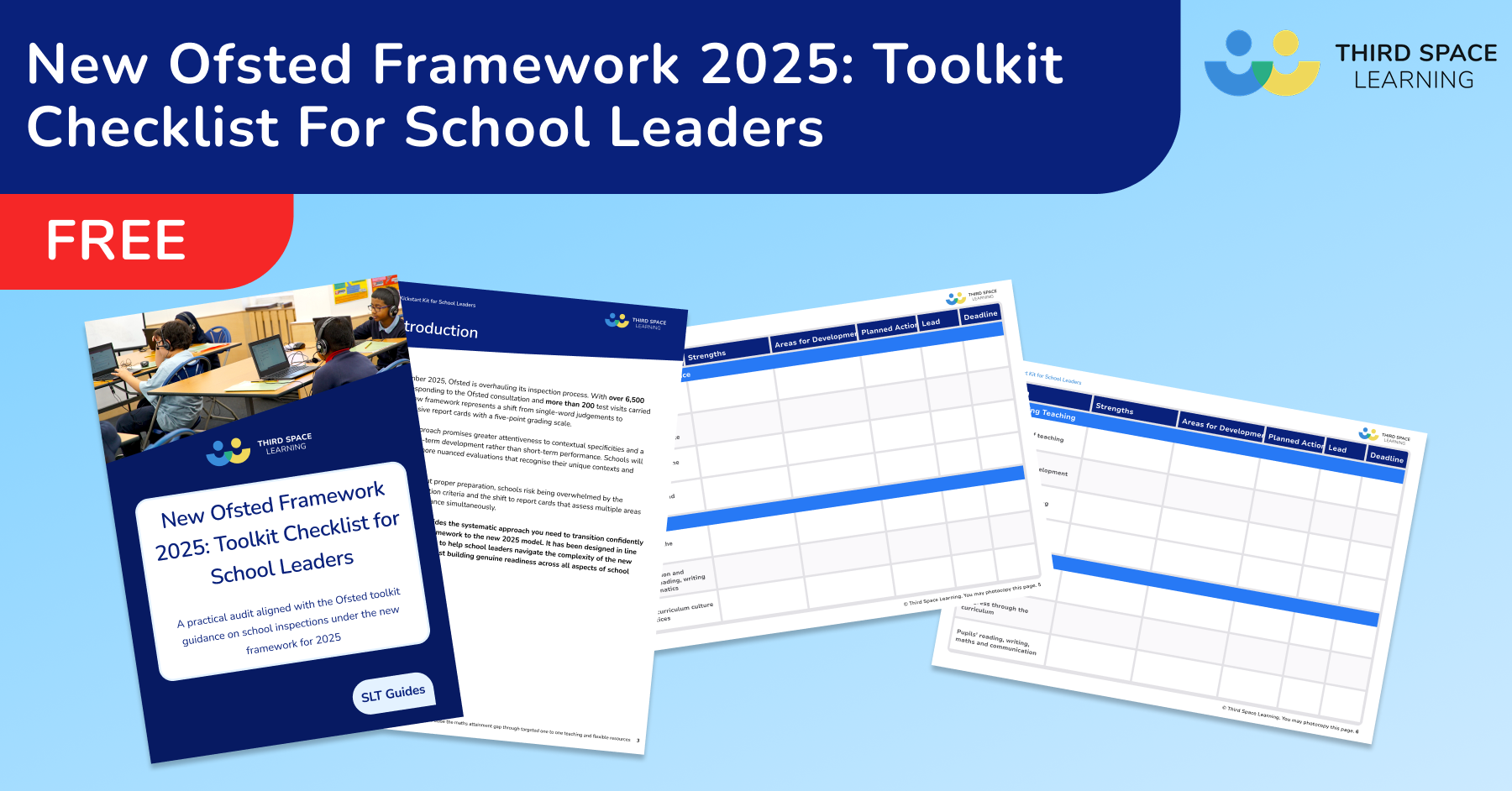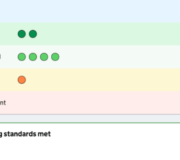What To Know And How To Prepare For Your Next Ofsted Inspection
Ofsted inspections, otherwise known as the Office for Standards in Education inspections, are never far from the news and surrounded by controversy. In over 20 years of his career, David has experienced at least 20 Ofsted inspections under different frameworks. Here he offers his insights and knowledge to help schools prepare for their next inspection.
Advice in this article is for schools within England. Schools in Wales and Scotland likely have different inspection systems.
School leaders should find the balance between preparedness for Ofsted and not giving these visits undue attention and stress.
Generally, if something is the right thing to do for a school’s students and community, then as educators that is what we should be doing.
Reflecting on my first Section 5 inspection; the school had a month’s notice and a squadron of subject specialist inspectors descended for a week. Ofsted graded individual teachers, all aiming for outstanding teaching, and the school took on a different persona.
These days, the framework tests the school’s leadership and should not tell us anything we aren’t already aware of.
While it’s important to be mindful of ever-changing priorities, such as the current focus on educational research, the Ofsted framework should not structure the school improvement plan (SIP). Instead, it should identify key priorities.
What is an Ofsted Inspection?
Ofsted inspections provide a level of accountability to state schools. The purpose of an Ofsted inspection is to provide an external evaluation and judge the overall performance of an education provider’s provision.
Inspectors will use the Ofsted grade descriptors to report on the following educational settings:
- maintained schools
- academies
- childcare settings
- early years providers
- further education establishments
- children’s social care provision
- some independent schools and colleges
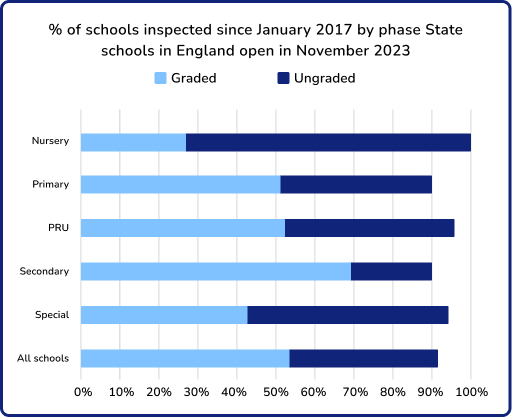
Education Data Lab – the percentage of graded and ungraded inspections since 2017.
Ofsted’s inspection framework and process are the same for primary schools and secondary schools. However, inspectors may not be phase specialists. For example, inspectors who are secondary teachers may inspect a primary school and English specialists may conduct a deep dive into maths or history.
Any Ofsted deep dive is undeniably stressful for all involved. There is a particular onus on senior leaders, but they can prepare for the process in advance.
Although schools don’t do things for Ofsted, they do have to be ready for an inspection.
New Ofsted Framework 2025: Toolkit Checklist
A practical audit aligned with the Ofsted toolkit guidance on school inspections under the new framework for 2025. Includes an actionable checklist.
Download Free Now!Purpose of an Ofsted inspection
Former Chief Ofsted Inspector, Amanda Spielman, stated Ofsted inspects, shares and identifies good practices and diagnoses serious issues within a school.
Ofsted themselves define the purpose of an inspection is:
‘To improve lives by raising standards in education and children’s social care. We inspect and regulate thousands of organisations and individuals providing education, training and care – from childminders to training providers, schools to local authorities – and we share what we find.’
Ofsted reports directly to Parliament, parents, carers and commissioners.
Despite claims to share and identify good practices, Ofsted inspections recently sparked controversy after the death of headteacher Ruth Perry.
Current Chief Inspector, Sir Martyn Oliver, promises to take tangible actions around improving the experience of an inspection for the individuals involved.
I’m determined that we learn from this to improve the way we work and respond fully to the coroner’s inquest, taking tangible actions to address the concerns raised. A lot has been done already, but a lot more can be done now – starting with a robust programme of mental health awareness training for all our inspectors.
Sir Martyn Oliver, Chief Inspector for Ofsted
In part in response to this tragedy, from September 2024, Ofsted is scrapping single-word judgments of schools and plans to introduce report cards from September 2025.
Read more: Ofsted Ratings and Reports: New Ofsted Judgements Explained for Teachers & School Leaders

Meet Skye, the voice-based AI tutor making maths success possible for every student.
Built by teachers and maths experts, Skye uses the same pedagogy, curriculum and lesson structure as our traditional tutoring.
But, with more flexibility and a lower cost, schools can scale online maths tutoring to support every student who needs it.
Watch Skye in actionOverview of Ofsted Inspections
Ofsted provides a level of accountability for state-funded schools and is responsible for judging the quality of provision for a range of providers.
There are 3 sections of an Ofsted inspection:
1. Top-level view
During top-level views, inspectors collaborate with school leaders over a 90-minute phone call to gain an overview of the school’s curriculum, teaching and learning.
They explore the curriculum intent, implementation and impact, in addition to specific choices.
At this point in the process, Ofsted inspectors select individual subjects for a deep dive in consultation with school leaders. Content taught during the inspection can influence the chosen subjects. Schools may also suggest areas of strength and weakness for the inspector to consider.
2. Deep dive
Following the initial phone call, Ofsted inspectors visit the school the next day and carry out deep dives on their chosen subjects.
During Ofsteds’ deep dive, inspectors will conduct a series of deep dive questions while looking for links between the curriculum standards, teaching and assessment.
read more: The 13 most popular Ofsted questions [2024]
3. Final view
Ofsted brings all their evidence from the inspection together and decides whether they need any further evidence to reach a satisfactory conclusion.
Using the data gathered, Ofsted provides the school and parents with ratings and reports on the areas inspected.
How often should you expect an Ofsted Inspection?
There are several different types of inspection. Broadly speaking, these are categorised into ‘graded’ section 5 Ofsted inspections and ‘ungraded’ inspections.
While the potential outcomes are different, the preparation and process are very similar.
Types of inspection:
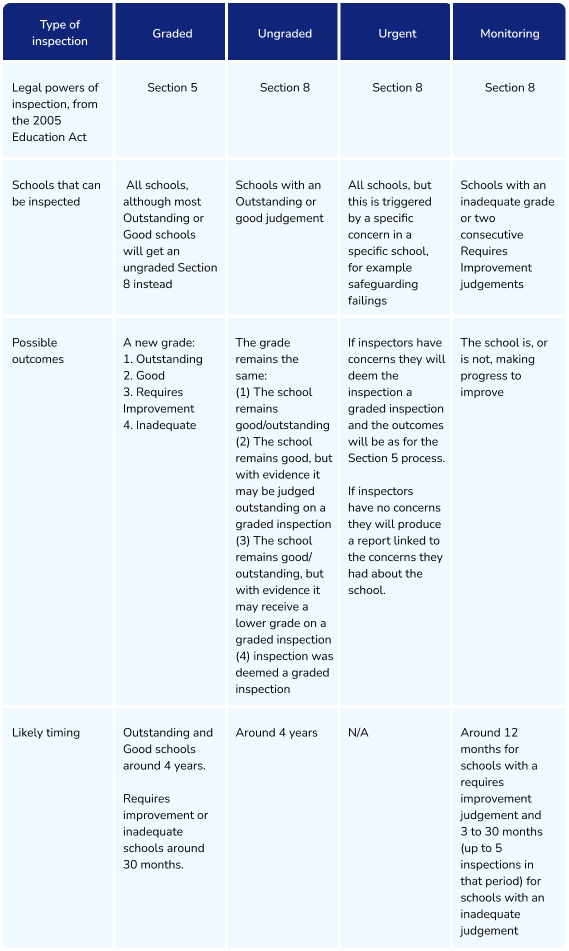
This article focuses on Section 5 inspections, although the guidance given applies to every type.
Criteria for measuring schools in an Ofsted Inspections
The education inspection framework sets out how Ofsted will inspect state schools. The key for school leaders and governors is to know the parts relevant to the school’s portfolio.
Although subject to change, the current framework has been in effect since September 2019 with four possible outcomes that could result from an inspection:
- Grade 1 – Outstanding
- Grade 2 – Good
- Grade 3 – Requires improvement
- Grade 4 – Inadequate
There are four areas that Ofsted passes judgement upon:
- Quality of education
- Behaviour and attitudes
- Personal development
- Leadership and management
Whilst there will be more detail on each of these later on, leadership and management mean leadership at all levels. In particular, the quality of middle leaders (especially heads of departments) is crucial.
It is also vital to train the school’s governing body. They play a critical role and can be a real asset if prepared fully.
The framework ensures multiple inspectors make coherent and similar judgements of the same educational setting.
Helpfully, the framework sets out the type of evidence and information taken into account, meaning school leaders can fully prepare for an inspection.
As of May 2024, Ofsted will publish sub-judgements for all past and future graded school inspections carried out under the Education Inspection Framework, as well as the overall inspection grade.
From September 2024, Ofsted reports will no longer make a single-word judgement on the overall effectiveness of a school. However, schools that have recently been inspected will retain their rating.
From September 2024, Ofsted will remove deep dives from ungraded inspections completely.
Inspections are not about putting on a show during the two days when inspectors are present. Sufficient evidence for each category should already be in place.
Effects of Ofsted Inspections
An announcement made on the 7th of December 2023 made clear the stress that the inspection process can place upon leaders.
The impact of a judgement from an Ofsted inspection can be wide-ranging.
Improvement requirements and consequences
Schools judged as ‘requires improvement’ or inadequate could result in a change of personnel or follow instructions to join a multi-academy trust.
From experience, the regular Section 8 monitoring inspections can have a detrimental effect on school morale. Frustratingly, the ‘feel and daily operations’ of both outstanding schools and inadequate schools may feel very similar.
Identification of underperforming schools
With the key Progress 8 measure, one question easily identifies underperforming schools. Do young people make enough educational progress?
Ofsted may also identify schools of concern around aspects of safety and safeguarding.
Impact on school funding and resources
While inspections provide fantastic recognition of the hard work and dedication of a school, they can also be devastating.
An inadequate judgement can result in difficult teacher recruitment and retention issues.
Outstanding and Good schools are likely to become oversubscribed by parents choosing to send their children there. An inadequate judgement may result in a declining roll and subsequently lower funding and fewer resources for pupils.
Role of Ofsted inspections in school accountability
Although Ofsted does attract criticism, in the twenty years of my career I have found most inspections to be positive, even when working in a school deemed inadequate.
School leaders are spending public money and there should be some form of accountability. Ofsted’s spending trends inform policymakers.
It is important to remember that teachers and schools are not the target audience of Ofsted reports.
Ofsted Inspections and School Performance
Controversially, the link between external examination results and Ofsted grades is inconsistent.
This is because the framework focuses on a school’s curriculum even though learning is difficult to quantify outside of proxies for learning.
There is a range of inspection outcomes with schools receiving the same Progress 8 score gaining ‘good’ outcomes, despite some being well above average and others well below average.
Of course, Ofsted must understand a school’s performance data, which is available on the public domain in the School Performance tables. For example, persistent absence, attendance, suspension levels and the performance of pupil premium students, SEND, ethnic minorities and other pupil groups.
Positive inspection outcomes should not be the green light for a school to start coasting.
We should be creating school cultures where every teacher believes they need to improve, not because they are not good enough, but because we can be better.
Dylan Wiliam
Effects of inspections on teaching and learning
Apart from keeping children safe, the key role of schools is to provide education. Often, Ofsted inspection reports are considered bland. But specific statements are key to improving teaching and learning.
Recommendations for improvement can significantly impact teaching and learning and it is not uncommon for the findings of an Ofsted inspection to drive a SIP.
Relationship between Ofsted inspections and student outcomes
Since COVID-19, the relationship between Ofsted inspections and student outcomes has been particularly messy.
It’s impossible to fairly compare Progress 8 between 2019, 2020, 2021 and 2022. These years had a mixture of formal examinations and teacher assessments. Secondary schools may not have Key Stage 2 data as SATs could not take place for several years.
This highlights the need for schools to improve their priorities, not what Oftsed expects. School’s focus should be on student outcomes and the quality of the curriculum.
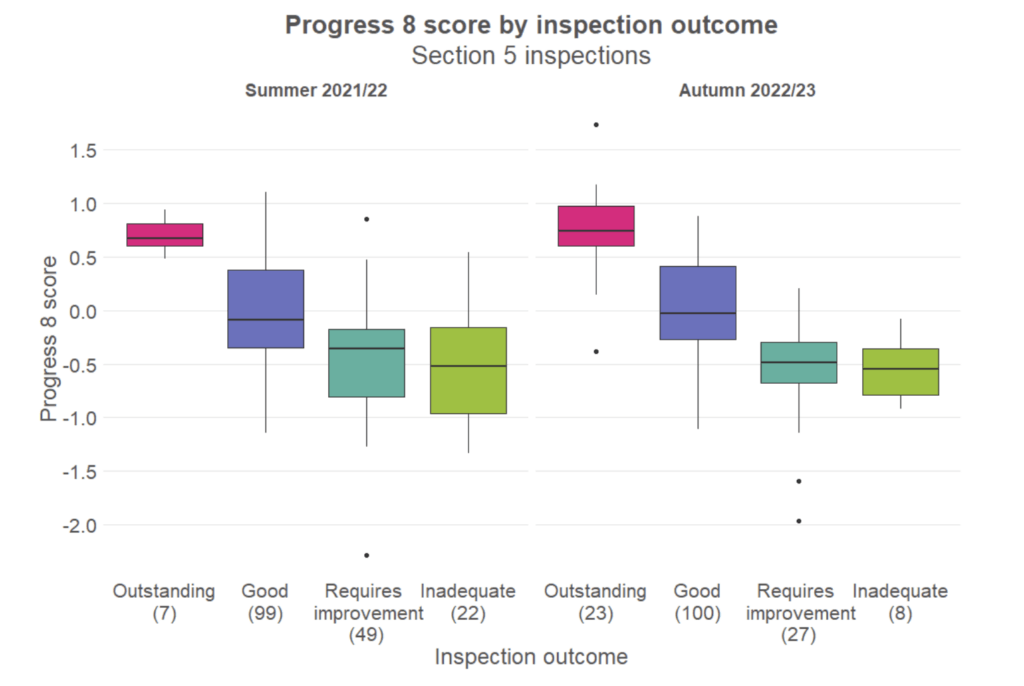
Challenges and criticisms of Ofsted Inspections
Controversies surrounding the reliability and validity of inspections
Although Ofsted maintains that it conducts quality assurance around the reliability and validity of its inspections, there are criticisms. Many relate to the individual inspection team.
Published research highlights the weak link between inspection outcomes and subsequent school performance. School quality ratings are weak predictors of students’ achievement and well-being.
One study found that the Ofsted inspection grade could predict only 4% of pupils’ outcomes.
To date, the most powerful predictors of student success in later life are their performance at age 11 and socio-economic factors.
Additionally, Ofsted does not always account for the negative impacts of school closures and disrupted lessons during the pandemic on some students.
This is especially true for attendance and behaviour issues where Ofsted inspectors maintain the pre-pandemic expectations even when there’s a universal decline.
Perceived biases and inconsistencies in inspection outcomes
Ofsted’s data shows that 88.6% of 1,336 respondents strongly agreed or agreed with the statement that they were satisfied with how the inspection was carried out.
However, there is some disagreement around this. A survey of school leaders by ASCL found that around 90% of them felt Ofsted inspections failed to fairly and accurately judge their schools.
In addition, schools in more difficult communities often find it almost impossible to receive an ‘outstanding’ or ‘good’ rating.
Negative impact on teacher morale and job satisfaction
From experience, the constant Ofsted Section 8 monitoring visits negatively impact teacher retention and recruitment.
If staff turnover is high, schools often use Ofsted as a marketing tool to recruit staff as well as students. Schools with a lower Ofsted rating may struggle with teacher recruitment and retention.
Often, striving to improve an Ofsted rating can impact teacher well-being and workload negatively with extra ‘tasks’ in place to prepare for the next visit.
How to prepare for an Ofsted visit: 18 strategies
1. Emphasise business as usual
This is easier said than done, as with many things. Schools should not do anything for Ofsted.
When the call comes in, there shouldn’t be all-night marking and replanning of lessons happening. The majority of colleagues should come in and treat it as a normal day.
2. Have an operational plan
Consider who will continue the day-to-day duties and ensure that the school runs properly. In most inspections I have been part of, a member of the senior leadership team becomes the operational headteacher during the two days, ensuring that the Headteacher can focus on the visitors.
Each inspection report provides areas for development. The next inspection team uses these during their inspection.
3. Make sure you know how you are doing against the development points from the last inspection
While the school SIP should not be entirely based on these points, it is sensible to consider:
- How is the school doing against these?
- How do you know?
4. Ensure that your safeguarding is on point
Ensuring the safety of our community is the most important role of educators. It is essential to understand that inspectors will be looking not just for the implementation of KCSIE and safeguarding guidance but for the culture around safeguarding:
- Are staff all of the opinion that it could happen here?
- Do staff know how to make referrals?
- Do staff know how to report a concern about the head?
Ensure robust processes and systems around recruitment, visitors, and reporting bullying. Procedures for identifying young people who need early help should be clear for all staff members of.
Students who receive off-site provision are still the responsibility of the school. Visiting off-site provisions, and evaluating their pastoral care and quality education is a must.
5. Know your brief and the inspection handbook sections relating to it
The Ofsted inspection handbook can seem daunting but it’s useful for school leaders. It lists the sources of evidence that inspectors will use, the type of information they will accept and what they will be looking for.
As behaviour lead, I demonstrated improvements in attendance and behaviour of key groups over time. This trend needs to span at least three years of data.
As part of my evidence, I had a graph showing trends of suspensions and permanent exclusions as well as internal removals and behaviour points by key pupil groups.
This showed the data for the previous six years — before I was even in post. Having evidence of the impact readily available in meetings with Ofsted inspectors can be extremely helpful.
Exclusions at [school] since 2014
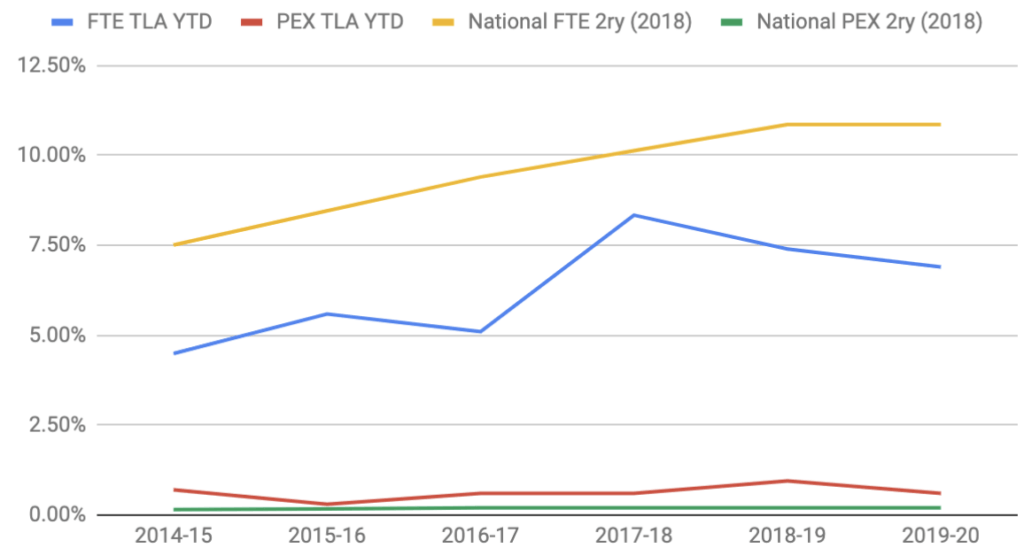
Using the inspection handbook to frame SLT meeting agendas can be beneficial for self-assessment from school leaders.
Is our self-assessment of each section accurate and is the evidence clear?
Ofsted research reviews are freely available on subjects such as pupil premium funding, tutoring and the maths research review and maths report.
6. Evidence the impact
To understand your school it is useful to ask the following questions:
- What was the situation before?
- What did you do?
- What was the impact?
The third question is the most important to evidence. For example:
- The typical student removed was a boy, pupil premium and at least 2 years behind their chronological reading age
- We used pupil premium to fund Student Support Mentors whose caseload was identified through students with high removals
- Removals in this group were reduced by 65% and their performance in internal assessments increased
- The extra time freed up for Year Leaders meant that they could implement proactive strategies and early help around students at risk of poor behaviour
7. Articulate the impact
Articulating the impact is crucial. Fundamentally, school leaders should be able to triangulate data. For example, how do you know your sequence of learning has made an impact? Why this? Why now?
Examples of impact evidence:
- Lesson visits and learning walks during which visitors have spoken to students about how this lesson fits into previous learning
- A visit from an external SEND inspector has commented that better sequencing is making a positive impact on students with SEND
- Internal assessment data shows that more progress made. Reams of data aren’t necessary but you can give the headlines
- Staff voice articulating and justifying curriculum sequencing
- External exam results have risen
8. Know your school’s strengths and weaknesses
School leaders should know their schools inside out. During the initial phone call with the lead inspector, leadership may suggest areas to deep dive into and those to avoid. For example, a school may suggest avoiding a subject where a colleague is returning to work after a prolonged absence. Whilst Ofsted will likely inspect a core subject, have a range of foundation subject options for them.
For example, if science has been a key focus, suggest that area as a deep dive. If you are concerned about the quality of geography, allow them to have a look there. If you have a PSHCE team that is brilliant, offer that up.
Remember that the inspection is looking at the judgments of school leaders. Take control of this process.
9. Hold robust, candid conversations
Whilst I would not advocate running mini-Ofsted inspections, the usual line management of middle leaders should be robust and based upon clear evidence.
It can also be beneficial to work with other schools to provide a peer ‘stress test’ of key areas. Part of the normal CPD of middle leaders should be to get them talking about their subjects. Do they know their subject? Can they justify the sequencing of the curriculum?
10. Create summaries on a page for each framework
Whilst the current framework does not allow the school to give detailed data sets, schools are data-rich. Use summaries of this in meetings. I advocate taking a device to meetings as an inspection is not a test of memory.
Whilst inspectors will not take huge reams of data, they must take into consideration high-level impact data that you give in meetings. The meetings are short, so don’t be afraid to take the agenda.
11. Be honest and have a plan
The team will have seen the Progress 8 Score and other data. Early in my career as a Head of Geography, I was asked to ‘talk up’ an inadequate department. Luckily I did not heed this advice. Be honest about where your school is and have a plan. If your Progress 8 is below average, you can still secure a good judgement.
12. Ensure that the culture of your school is inclusive
This should seem obvious, but do all teaching colleagues understand their role in securing progress for the students that they teach? What are they doing to ensure that those with poor attendance are catching up?
It’s not the role of TAs or the SENCo, the accountability rests with the classroom teacher for the progress of every pupil. However, there should be CPD and support mechanisms in place for class teachers.
Every teacher is a teacher of SEND. Many of the methods of instruction advocated by cognitive science mean that SEND students learn better. For example, chunking and retrieval practice makes learning better for all students but is especially impactful for those with learning needs.
13. School websites should be compliant and tell a positive story
Before they set foot in your school, Ofsted will have a clear hypothesis of areas they wish to investigate.
This will be based upon information already in the public domain, including your website. As a Chair of Governors, I remember tripping up on a pupil premium document that had not received a quality check. That led to difficult conversations and the inspectors being adamant that the provision was inadequate.
Make sure that there is an appointed governor for website compliance and make it a regular agenda item in SLT operational meetings. It can be detrimental to have the incorrect date on the front of an otherwise updated policy.
14. Embrace your governing body
Frequently invite governors into school. Make sure they can answer questions. For example, if one of your strategic priorities is oracy, what does this look like in every classroom? If every teacher should have a folder relating to the learning needs of each class, where is it?
Governors are not educationalists but should not just take the Headteacher’s word for things. The best way to do this is for SLT to meet with a nominated governor once a term and take them on learning walks.
15. Ensure that your subject leads are subject experts
Subject leads, whether in primary or secondary, are the experts. They should receive appropriate support and CPD to enable them to do their job. This should be subject-specific and form part of the key questioning in a deep dive.
There are two gold mines of information there:
- Research Review Series, for example in Geography, are useful documents summarising what high-quality education looks like.
- Subject reports, for example, the Geography report states that some underperforming departments used outdated resources. Therefore a geography leader could audit their own.
16. Know how your school compares to other schools like yours
A common error is to measure school performance against others in your area, or MAT. But you may be in a local authority or trust that is underperforming.
The families of schools database from the EEF is useful here. Use it to identify schools like yours that are doing better, perhaps there is some learning in visiting these schools.
17. Do not pass the buck
Everything that a school does is the responsibility of the school. For example, if Ofsted judged your local authority’s provision for children’s services as inadequate, prepare an answer to show how you mitigate that risk.
If some of your KS4 students receive off-site provisions in a college graded as requires improvement, you need to explain how you ensure their education is not suffering.
18. Set up a ‘keep in touch’ document
Ideally, this can be a shared document on the school’s secure intranet of Google Docs. The Headteacher will have regular ‘keep in touch’ meetings where the lead inspector will verbally update their findings.
For example, they are pleased with English but need to see sufficient literacy support for SEND students in other subjects.
This is useful intelligence to get out to senior leaders and other stakeholders.
What are the roles of SLT, staff and governors during an inspection?
SLT
Be visible and reassuring. Speak to your teams and provide positive feedback. If someone you manage is involved in a meeting with inspectors, ensure they are briefed.
It’s useful for senior leaders not to be in meetings, indeed it is one way in which an inspection team triangulates information. Above all, communicate.
Have the inspection handbook on hand!
Have a plan to communicate after the inspection. Provide positive feedback and news. Thank people.
Middle leaders
Check-in on your team. If not involved with the deep dives, lend a hand in covering areas that are. For example, the reassuring presence of an experienced head of science is useful.
Make sure you support ECTs and emphasise they carry out their normal routine. If it’s not done before Ofsted’s first phone call, it’s too late!
Governors
As a Chair of Governors, I decided to be in the school to support the Headteacher for the entire inspection. I had the support of my school at the time, where I was a serving Deputy Head.
It’s vital to have a team of Governors that can meet confidently with the inspection team — time for a pre-meeting to rehearse potential answers is useful.
Usually, the main trends would have already been identified by the inspection team and shared with the Headteacher via the keep in touch sessions.
The more eyes and ‘boots on the ground’ during an inspection the better. Colleagues go through an enormous amount of stress. Seeing known faces is reassuring.
What happens after an Ofsted inspection?
Once Ofsted leaves, it can feel anticlimactic. School leaders are not allowed to share the news with colleagues before the inspection is published. In effect, business carries on as normal.
Of course, senior leaders may start drafting communication plans and make tweaks to the school improvement plan.
Appreciate that some colleagues will not have seen or been seen and may be feeling annoyed about it. Get around during the days after an inspection. Speak to colleagues and be visible. It’s not unusual for a spike in behaviour to occur after a visit as exhausted teachers may relax a little too much.
Read more: The 12 Most Important Ofsted Safeguarding Questions and Answers [2024]
FAQs
Whilst the school leadership, governors and MAT leaders will be told the judgement at the final debriefing, the report takes much longer to be processed as it goes through the quality control mechanism. Usually, the Headteacher will provide a draft of the report for fact-checking and Ofsted states that reports should be published within 38 working days of the last day of the inspection.
Typically, inspections should occur around 4 years after the last inspection. Approaching the 4-year mark could trigger an inspection. However, this has been known to be longer for Outstanding and Good schools.
The 5 areas that Ofsted will look at in a school are:
Overall effectiveness.
Quality of education.
Behaviour and attitudes.
Personal development.
Leadership and management.
Whilst the exact timing of an inspection is difficult to pin down, the lead inspector will call the school by 12pm the day before the inspection.
DO YOU HAVE STUDENTS WHO NEED MORE SUPPORT IN MATHS?
Skye – our AI maths tutor built by teachers – gives students personalised one-to-one lessons that address learning gaps and build confidence.
Since 2013 we’ve taught over 2 million hours of maths lessons to more than 170,000 students to help them become fluent, able mathematicians.
Explore our AI maths tutoring or find out about school tutors for your school.
